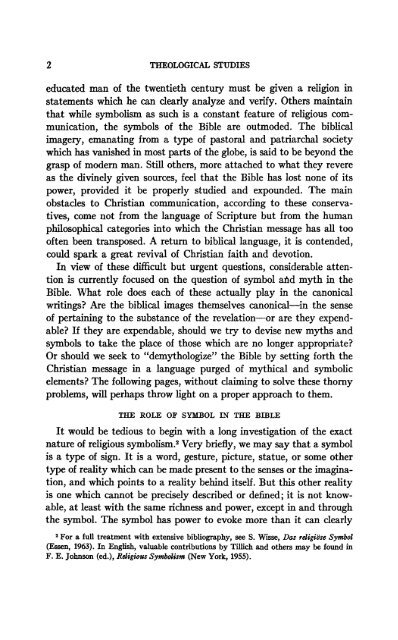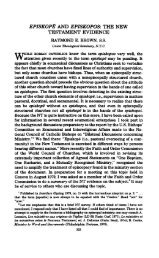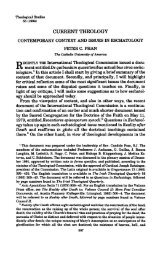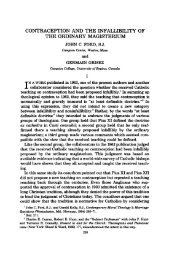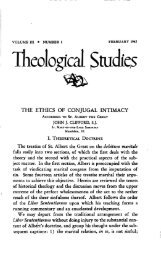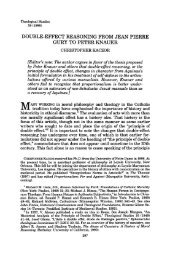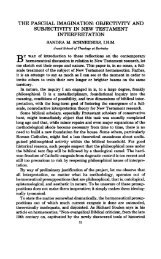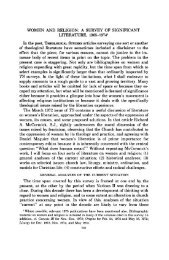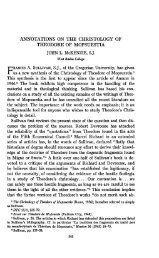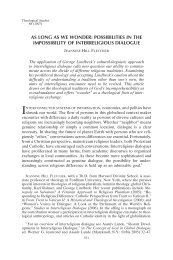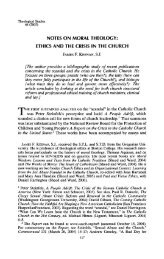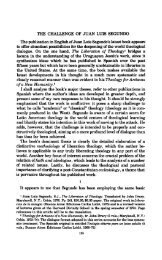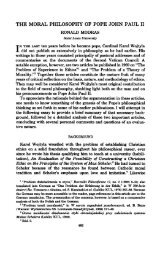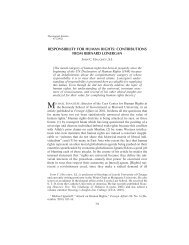SYMBOL, MYTH, AND THE BIBLICAL REVELATION AVERY ...
SYMBOL, MYTH, AND THE BIBLICAL REVELATION AVERY ...
SYMBOL, MYTH, AND THE BIBLICAL REVELATION AVERY ...
You also want an ePaper? Increase the reach of your titles
YUMPU automatically turns print PDFs into web optimized ePapers that Google loves.
2 <strong>THE</strong>OLOGICAL STUDIES<br />
educated man of the twentieth century must be given a religion in<br />
statements which he can clearly analyze and verify. Others maintain<br />
that while symbolism as such is a constant feature of religious communication,<br />
the symbols of the Bible are outmoded. The biblical<br />
imagery, emanating from a type of pastoral and patriarchal society<br />
which has vanished in most parts of the globe, is said to be beyond the<br />
grasp of modern man. Still others, more attached to what they revere<br />
as the divinely given sources, feel that the Bible has lost none of its<br />
power, provided it be properly studied and expounded. The main<br />
obstacles to Christian communication, according to these conservatives,<br />
come not from the language of Scripture but from the human<br />
philosophical categories into which the Christian message has all too<br />
often been transposed. A return to biblical language, it is contended,<br />
could spark a great revival of Christian faith and devotion.<br />
In view of these difficult but urgent questions, considerable attention<br />
is currently focused on the question of symbol aAd myth in the<br />
Bible. What role does each of these actually play in the canonical<br />
writings? Are the biblical images themselves canonical—in the sense<br />
of pertaining to the substance of the revelation—or are they expendable?<br />
If they are expendable, should we try to devise new myths and<br />
symbols to take the place of those which are no longer appropriate?<br />
Or should we seek to "demythologize" the Bible by setting forth the<br />
Christian message in a language purged of mythical and symbolic<br />
elements? The following pages, without claiming to solve these thorny<br />
problems, will perhaps throw light on a proper approach to them.<br />
<strong>THE</strong> ROLE OF <strong>SYMBOL</strong> IN <strong>THE</strong> BIBLE<br />
It would be tedious to begin with a long investigation of the exact<br />
nature of religious symbolism. 2 Very briefly, we may say that a symbol<br />
is a type of sign. It is a word, gesture, picture, statue, or some other<br />
type of reality which can be made present to the senses or the imagination,<br />
and which points to a reality behind itself. But this other reality<br />
is one which cannot be precisely described or defined; it is not knowable,<br />
at least with the same richness and power, except in and through<br />
the symbol. The symbol has power to evoke more than it can clearly<br />
2 For a full treatment with extensive bibliography, see S. Wisse, Das religiose Symbol<br />
(Essen, 1963). In English, valuable contributions by Tillich and others may be found in<br />
F. E. Johnson (ed.), Religious Symbolism (New York, 1955).


